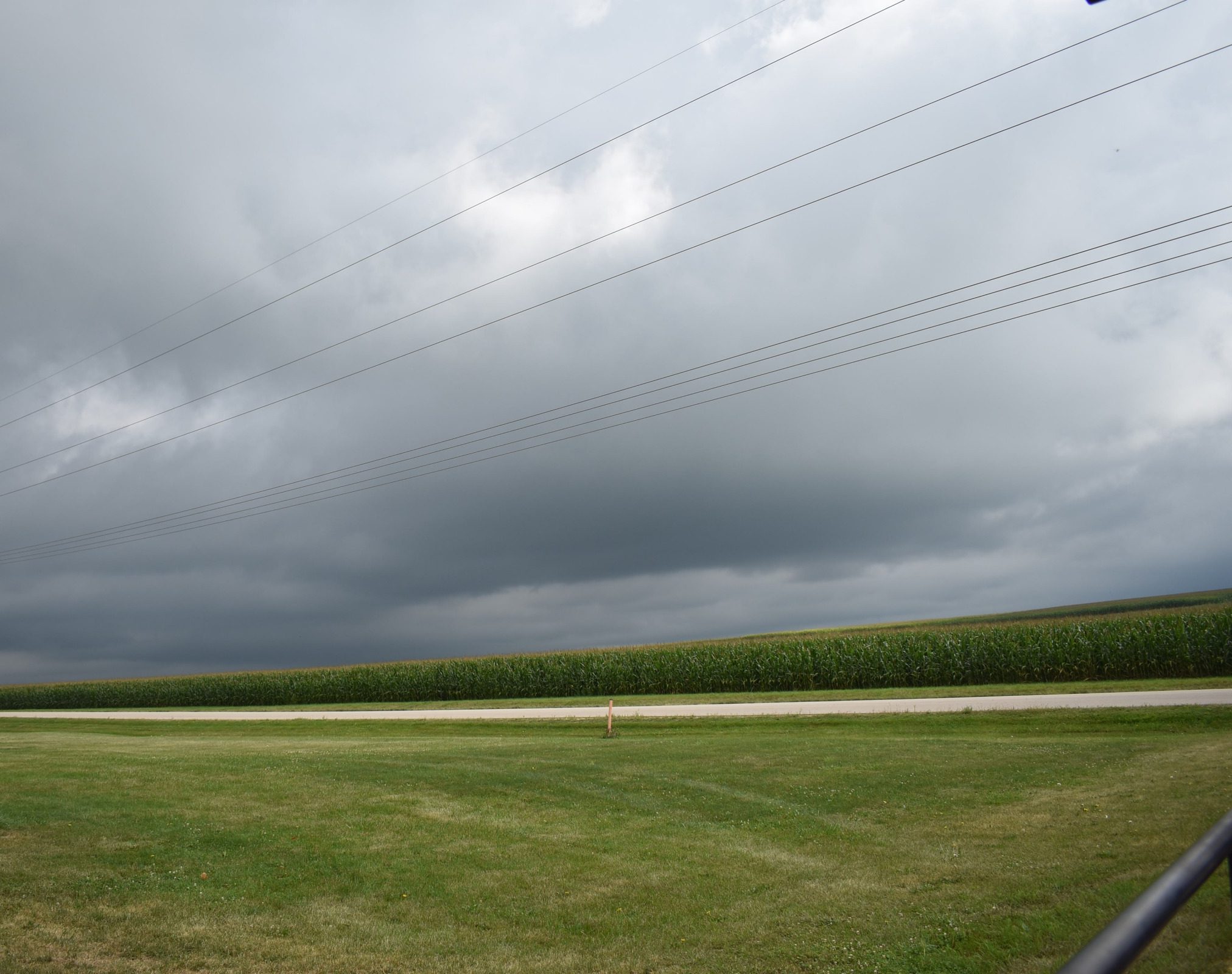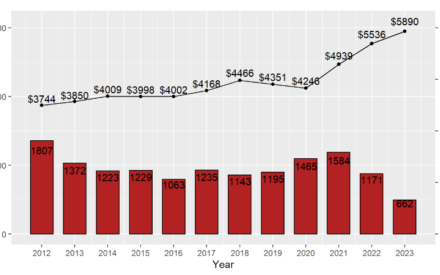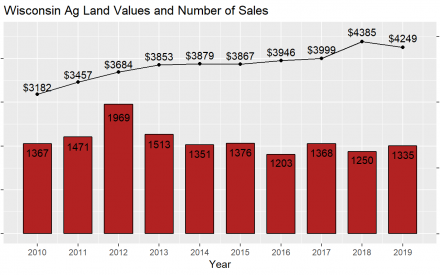Home » Topics » Ag Pricing and Contracts » Farmland Sale Values in Wisconsin
Farmland Sale Values in Wisconsin


Farmland Sale Values in Wisconsin
Home » Ag Land Pricing and Contracts » Farmland Sale Values in Wisconsin
What is a ‘fair’ price for buying farmland? Since supply and demand dictate pricing, the best way to determine the price of land is to understand the price land has traditionally sold for in your area.
Each year, UW-Madison Division of Extension compiles an Agricultural Land Price Report which discusses the changing price of farmland in Wisconsin. Read current and past reports below.
It is helpful to begin negotiations with objective data from the Agricultural Land Price Report and the National Agricultural Statistics Service Land Values Report. However, this data should be used as a guide when discussing the price of land, rather than an absolute. The data does not account for variations in the:
- Available land (such as soil type, yield potential, local demand, and the ease of reaching and farming those acres),
- Farm economy (such as current commodity prices and input prices), or
- Other sale terms (such as easements or other obligations or restrictions on the land).
Relying solely on the average farmland price may lead to an inaccurate conclusion about the ‘fair’ price of a piece of farmland.
It is important to remember that the ‘right’ price for land is also a price that makes sense financially for your farm. Farmers can use cash flow budgeting to determine whether your farm can support a land purchase at various prices.
How do you determine agricultural land value in Wisconsin?
The best way to determine the price of land is to understand the price land has traditionally sold for in your area. You can download the ag land values reports from our website, or you can find the most recent report for the National Agricultural Statistics Service (NASS).
The Extension reports are based on sales of bare land between non-related parties in Wisconsin townships. All parcels are between 35 and 2000 acres, and their predominant use was agriculture at the time of sale.
Towards the end of the year, NASS posts a summary of agriculture land sales, both bare land and improved properties. The delay in the publication of the NASS document allows county assessors to collect and verify each parcel intended future use.
Looking to rent or lease farmland in Wisconsin?
Each year, the National Agricultural Statistics Service and Wisconsin Department of Agriculture, Trade and Consumer Protection publish a County Cash Rent Report of cash rental averages for non-irrigated cropland and pastureland in Wisconsin.









